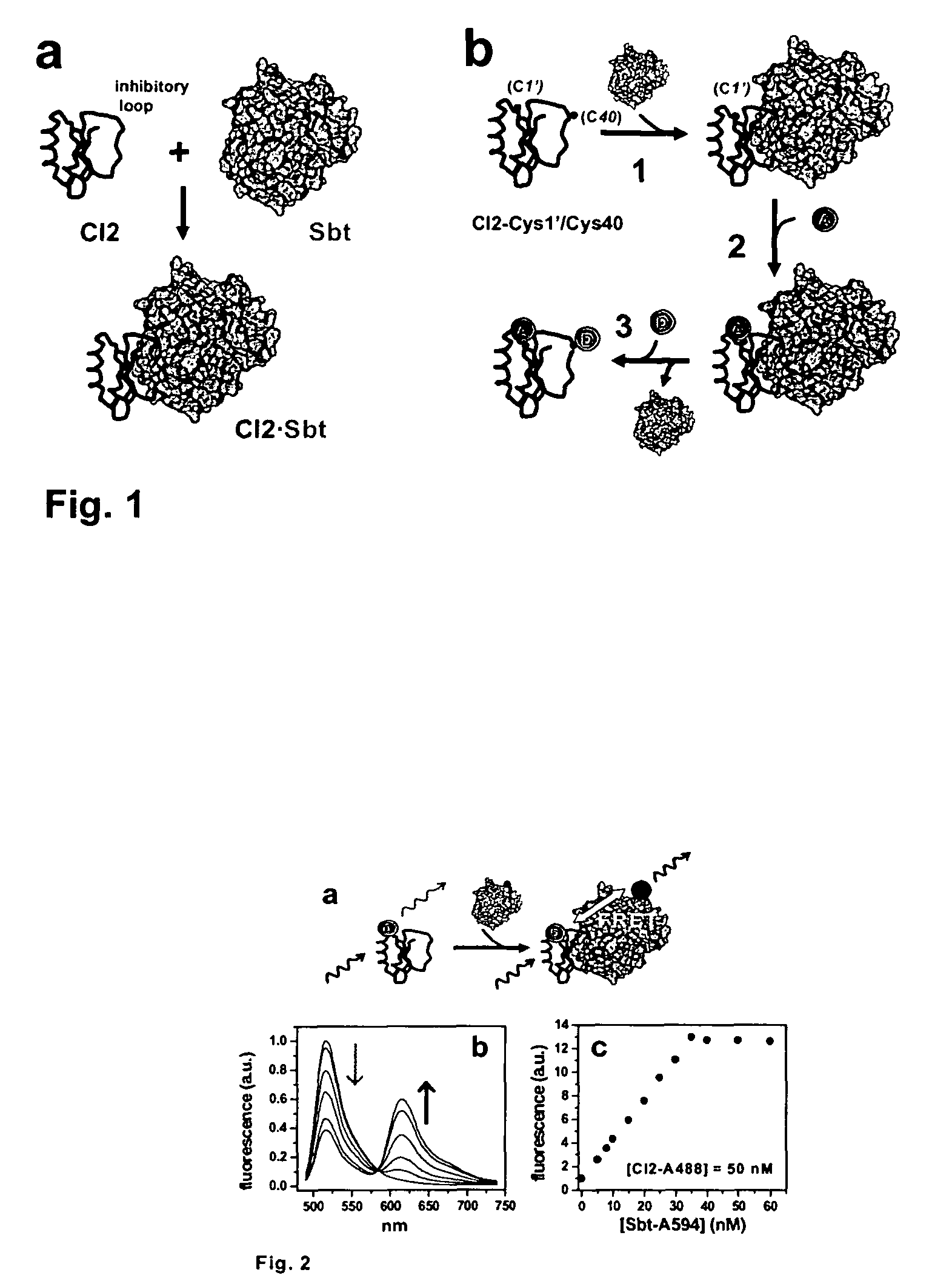Method for site-specific protein modifications
a site-specific protein and protein technology, applied in the direction of endopeptidase, peptide/protein ingredients, instruments, etc., can solve the problems of unwanted sample heterogeneity, two-step sequential labeling is not strictly site-specific, and biochemical processes often exhibit a large degree of heterogeneity
- Summary
- Abstract
- Description
- Claims
- Application Information
AI Technical Summary
Benefits of technology
Problems solved by technology
Method used
Image
Examples
example
I. Methods
Materials
[0032]Alexa Fluor 488 maleimide (A488 hereafter), Alexa Fluor 594 maleimide (A594 hereafter) and Alexa Fluor 647 maleimide (A647 hereafter) were purchased from Molecular Probes (Eugene, Oreg. USA). Guanidinium thiocyanate (GdnSCN) was from Sigma, Guanidinium chloride (GdnCl, sequanal grade) was from Pierce.
[0033]A plasmid for recombinant expression of a truncated 64-residue double mutant (Glu26Ala / Lys53Arg) of CI2, obtained by deletion of the first, unstructured 19 amino acids residues and replacement of Leu20 with a new starting Met was a gift from Dr. Daniel Koshland (UC Berkeley, Calif.). This truncated and mutated protein sequence has been shown to retain the complete structure and function of full-length CI2 and is referred to as wildtype (wt) hereafter.42,43
[0034]Three additional CI2 variants are described herein. The first mutant is a single-Cys variant in which Met40 in the inhibitory loop was replaced by a Cys (dubbed CI2-Cys40 hereafter). This mutant is...
PUM
| Property | Measurement | Unit |
|---|---|---|
| pH | aaaaa | aaaaa |
| pH | aaaaa | aaaaa |
| pH | aaaaa | aaaaa |
Abstract
Description
Claims
Application Information
 Login to View More
Login to View More - R&D
- Intellectual Property
- Life Sciences
- Materials
- Tech Scout
- Unparalleled Data Quality
- Higher Quality Content
- 60% Fewer Hallucinations
Browse by: Latest US Patents, China's latest patents, Technical Efficacy Thesaurus, Application Domain, Technology Topic, Popular Technical Reports.
© 2025 PatSnap. All rights reserved.Legal|Privacy policy|Modern Slavery Act Transparency Statement|Sitemap|About US| Contact US: help@patsnap.com



